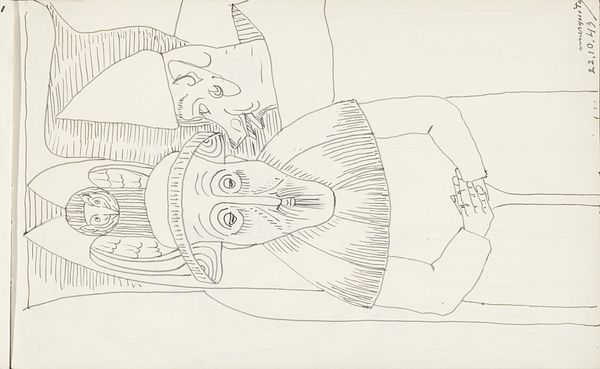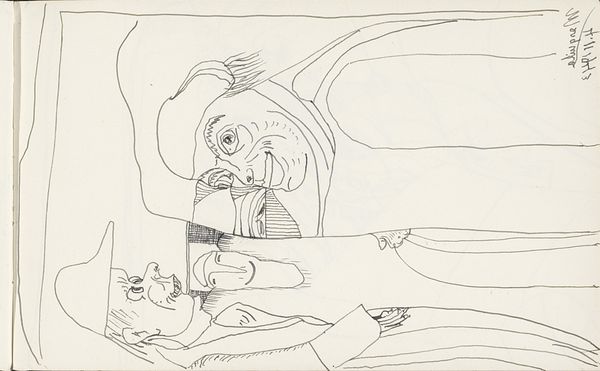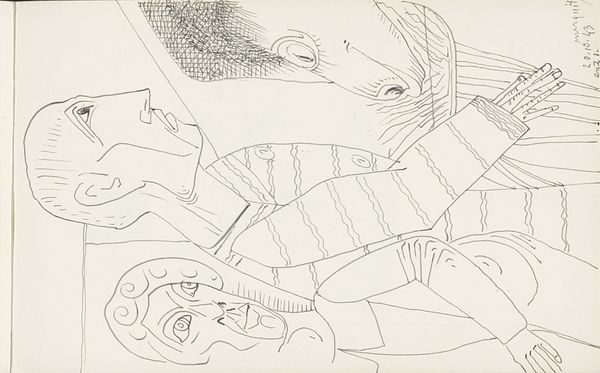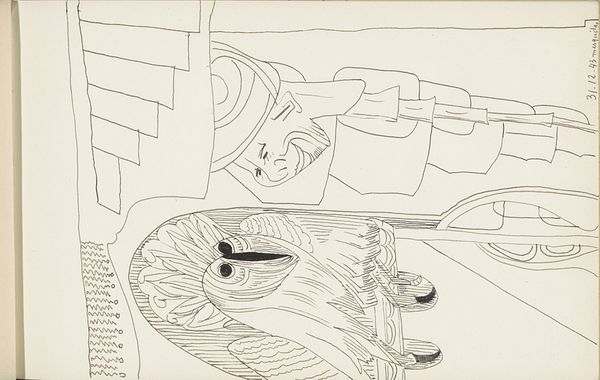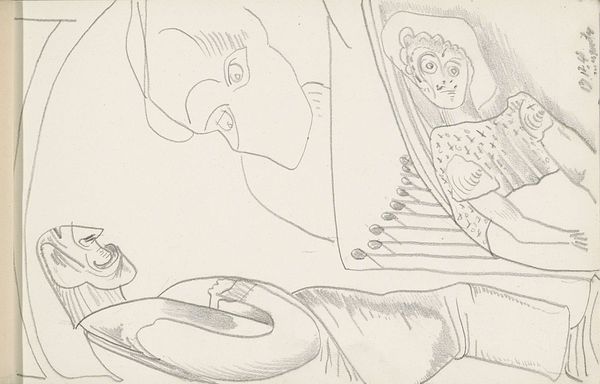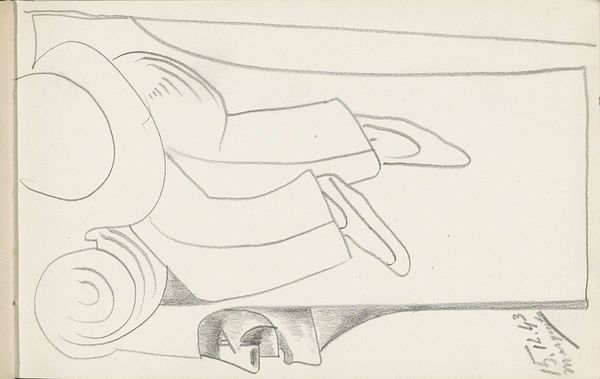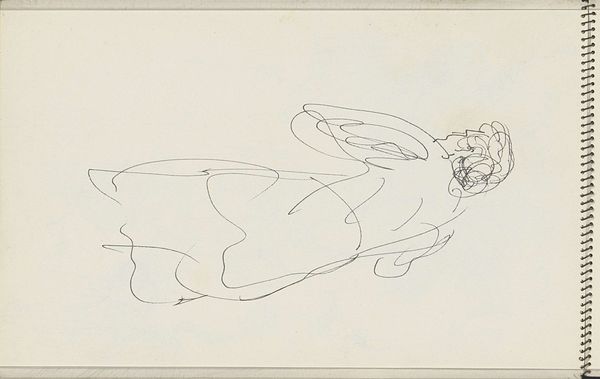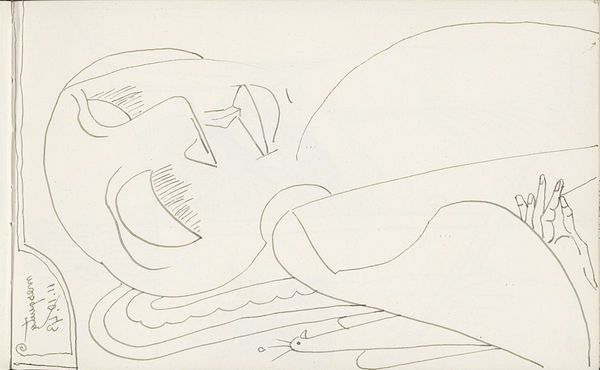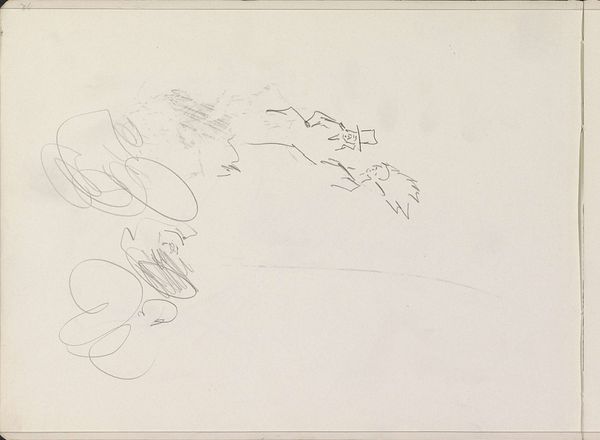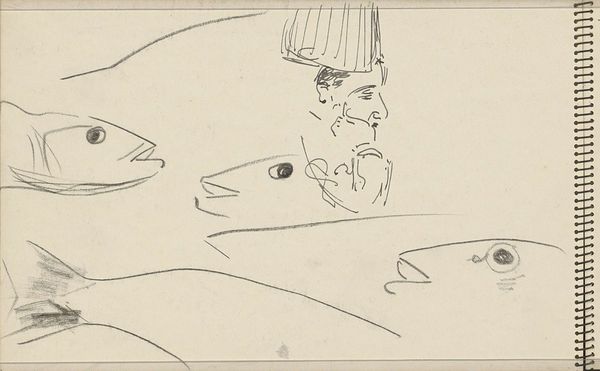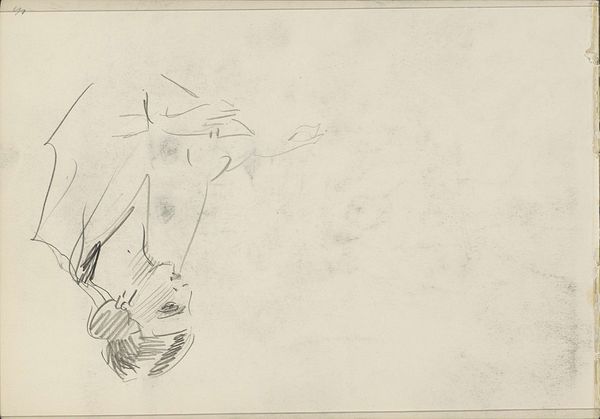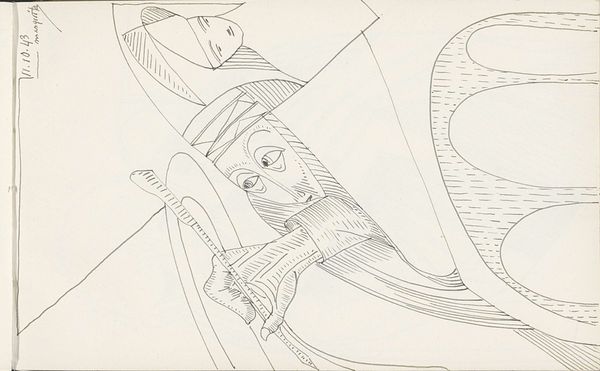
Figuur met twee mannenkoppen op één lichaam Possibly 1943
0:00
0:00
samueljessurundemesquita
Rijksmuseum
Copyright: Rijks Museum: Open Domain
Curator: Looking at this ink drawing from possibly 1943 by Samuel Jessurun de Mesquita, entitled "Figuur met twee mannenkoppen op één lichaam"—Figure with Two Male Heads on One Body—my initial impression is that it possesses an unsettling dreamlike quality, like a distorted reflection. Editor: Indeed. The materials themselves—pen and ink on paper—speak to immediacy, a quick sketch capturing perhaps a fleeting idea. We see the labor and method on full display. Do you get a sense of the social context when looking at this piece? Curator: Absolutely. The conjoined heads, their expressions both benign and unnerving, immediately bring to mind the Janus figure, a symbol of duality and transition deeply embedded in Western art and mythology. Consider the war years—Mesquita possibly made this during immense pressure, even danger. Editor: The relative bareness of the composition underscores its vulnerability. It reveals that it was likely a personal sketch. Curator: What strikes me is how Mesquita used expressionistic distortions – enlarged eyes and contrasting, yet simplistic, facial expressions. The visual language speaks to inner turmoil or a fractured identity. It reminds me of earlier traditions showing conflicting aspects of power and authority through similar imagery. The use of hands in two positions is really unsettling! Editor: Right! And given Mesquita's tragic end – his deportation and death at Auschwitz in 1944 – it's hard not to interpret these figures as representing something deeper, a struggle between opposing forces in a world descending into darkness. We also have to remember he taught M.C. Escher, there could have been much communication between the two men. Curator: That duality, that internal conflict you see, echoes not only the anxieties of the time, but perhaps even the artist's personal struggle to reconcile his identity and place in the face of overwhelming forces. Editor: Examining the material reality—the labor, the constraints, the urgency evident in those stark lines—heightens the emotional weight, the historical impact this relatively small drawing carries. We see not just art, but a fragment of a life marked by struggle and loss. Curator: Precisely. And the fact that it resides in the Rijksmuseum further cements its place within the broader narrative of Dutch art and history. A potent reminder that symbols often gain their greatest power from the context in which they are created and received.
Comments
No comments
Be the first to comment and join the conversation on the ultimate creative platform.
